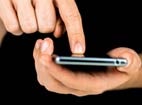No huge story captured the headlines this week, but I read lots of interesting smaller ones, particularly out of the Mobile World Congress in Barcelona. It seems that folks are starting to see the end of the long winter tunnel, except for the huge storm that is expected to affect much of the country next week.
Here are some of the highlights from the week:
Faster Service for Netflix on Comcast Cable
Net neutrality proponents likely were gnashing their teeth when Netflix and Comcast announced a deal under which the over-the-top provider said it would pay for a faster level of service, thereby threatening the competition. It was reported as the first deal after a Federal District Court in Washington, DC largely voided the net neutrality rules and the subsequent announcement that Comcast is going to buy Time Warner Cable.
InformationWeek commentary suggested that the pendulum truly has swung in favor of the network owners:
Consumer advocates fear that the Netflix-Comcast deal will spark similar deals with the cost of the fees passed along to the consumer. Will carriers be able to hold content providers over a barrel until they agree to pay fees for adequate bandwidth? It remains to be seen whether the FCC will attempt to step in to prevent such deals or whether its new rules will stand up to court scrutiny.
The reality may be a bit less dramatic, at least according to Mashable’s Lance Ulanoff. He writes that the deal really is business as usual and that “[t]he FCC’s now-dead rules never addressed this kind of situation.”
UC Is the Star of the Enterprise Telephony Sector
The enterprise telephony and unified communications markets are interesting places, according to Infonetic’s fourth quarter 2013 report, which was released this week. The firm reports that the enterprise telephony segment is characterized by shifting business arrangements. The release cites the merger of Mitel and Aastra, Huaxin’s purchase of Alcatel-Lucent’s enterprise telephony business, and Siemen’s name change and management overhaul as evidence of the internal focus.
The unified communications segment, which the company sees as part of the overall global PBX market, grew 31 percent during 2013. That offset much of the loss experienced by the overall sector, which totaled $7.4 billion in 2013, which was down 9 percent compared to 2012.
Hotspot 2.0: Progress, but a Long Way to Go
Hotspot 2.0, which will allow Wi-Fi users to roam and enable devices to seamlessly move between access points (APs) and cellular base stations, is making deliberate progress, according to a Light Reading story filed from Mobile World Congress in Barcelona.
The story said that the Wi-Fi Alliance has certified more than 75 devices for the standard, but added that “operators are just now starting to come around.” Many issues beyond base connectivity must be resolved for Hotspot 2.0 to succeed.
Boeing’s Smartphone Exhibits Self-Destructive Behavior
Boeing, which usually is associated with airplanes, has a communications arm. This week it released the Boeing Black Smartphone. The devices have the high-end features expected of a phone that is aimed at governmental and related workers. And it adds something else: If anyone attempts to open the casing, all the data is deleted and the phone will cease operating.
Reuters says that the phone was made domestically, runs on Android, is a bit bigger than an iPhone, and has dual SIM cards, which enables it to access two cell networks.
A Bright Idea
And, finally, comes a story about carriers who have seen the light and consider it a good business opportunity. Amidst the thousands of exhibitors at the Mobile World Congress in Barcelona was Pure LiFi. The company is working on a system that uses light instead of radio waves to transmit data. CNET reports that an Ethernet-connected device is attached to an LED light. It instructs the bulb to turn off and on millions of times per second and act, as the story says, like a very fast Morse Code.
At some point in the future, the story points out, the demand for data transmission capacity may outstrip the capacity of available radio waves. In such a scenario, a technology such as the one Pure LiFi is developing would be invaluable.



